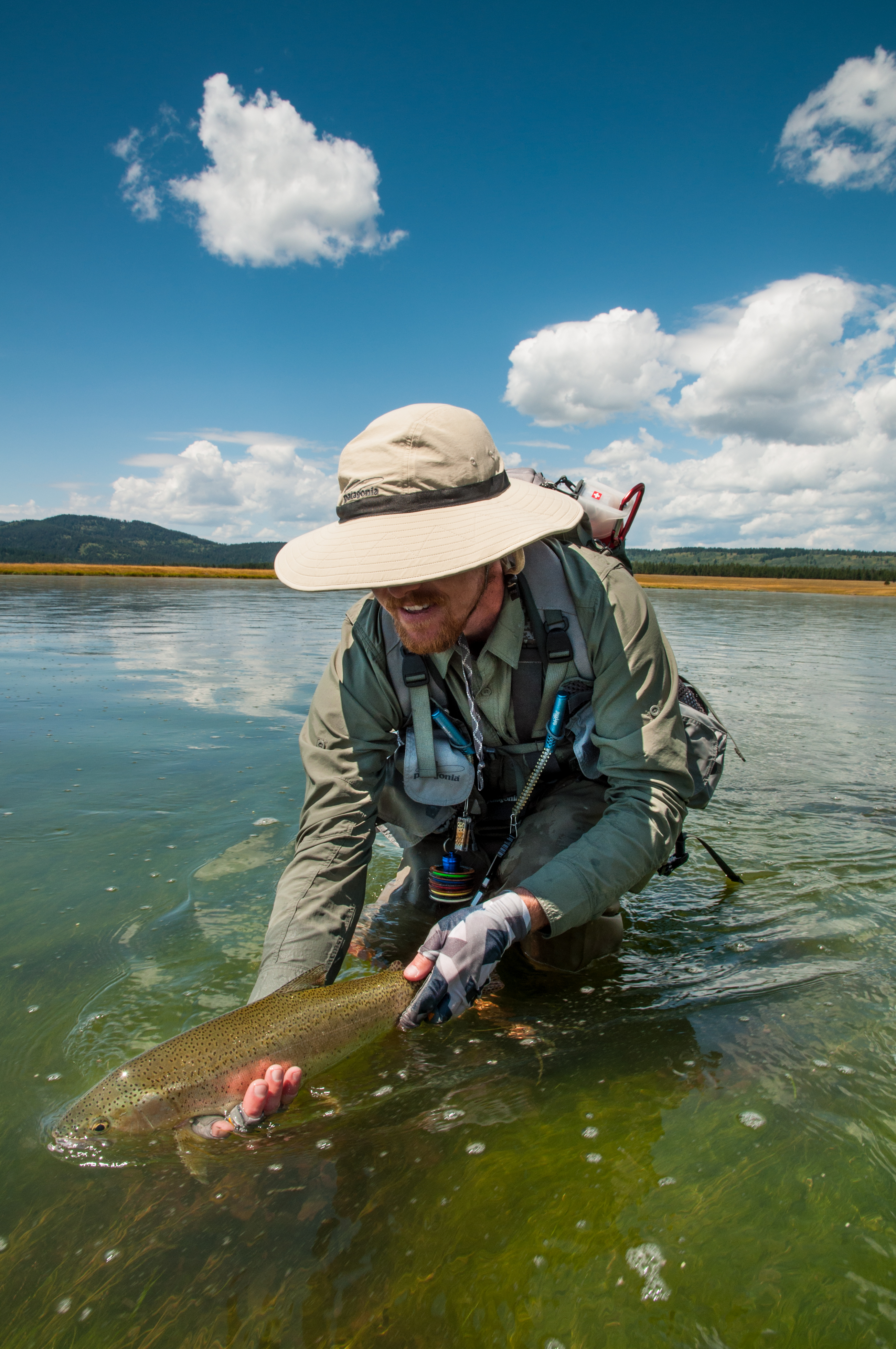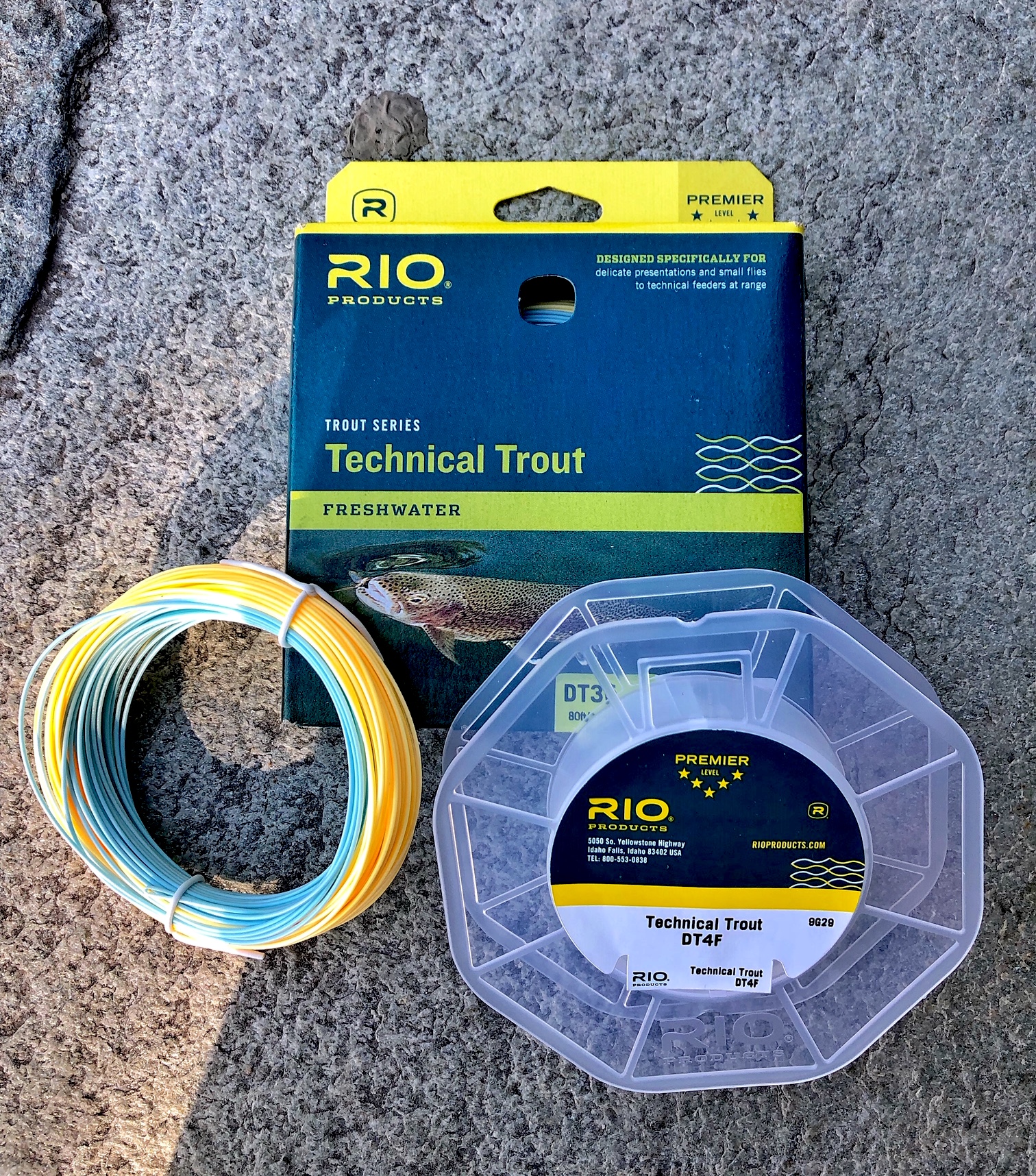Posted by Steve Schmidt on Sep 10th 2019
I have fished Double Taper fly lines for a long, long time. Once I figured out the type of fishing I was motivated to pursue: walk and wade, fishing to rising fish, on a spring creek, they proved to be the best tapers for my fishing style. The new Technical Trout DT fly line is one i've become very impressed with.
My first lines of this nature were the old iconic peach colored Cortland 444’s. Then Cortland came out with the 444SL. Supposedly a better line, but it was hard to tell. Then, in the early 90’s RIO got into the game of making fly lines. Since they arrived on the scene we’ve seen significant changes in fly line tapers, both in WF (weight forward) and DT (double taper). Today’s versatile tapers in all styles of lines now allow us to maximize the performance of your rod by selecting the appropriate fly line for the type of fishing you do, your skills as a caster, and your rod preference. I’m no exception.

Over the past few years my preferred DT line has been the RIO LT. This line has great energy, holds its shape in the air very well, and turns over long leaders and long fine tippets, which are a must when fishing many of the waters that we fish here in the west. But, these lines don’t just work well in the west. They can be effective wherever you may fish for trout. The LT replaced the Selective Trout, which is another DT line I fished, but it had limitations compared to the LT. Mostly when dealing with wind it struggled to hold its energy and turn a leader over since it ran a little on the light side.
Before I go off on the attributes of the new DT Technical Trout from RIO, I should address the advantages of a DT over a WF fly line. First off, they’re not for everyone, but in the right situation can enhance your experience. They’re also quite misunderstood. And, I realize the fly lines can be personal, especially since I’m pretty finicky when it comes to the fly lines I prefer.
That said, most flyfishers believe the only advantage of a DT line is the ability to turn it around after you wear out one end. This is an advantage a DT line has over longer belly WF fly lines and it does extend the life of the fly line and your purchase, but I believe there’s far more to these lines than flipping them around and possibly saving some coin. I feel they are the best taper in many instances for dry fly fishing when fishing for trout that are rising or when fish are in challenging lies where accurate and at times repetitive casts with accuracy are required. In these situationsI a DT line has advantages over WF lines.

Generally when your fishing to a specific trout that is rising or holding in a tight lie, to be successful you should be close enough so that you can fish a fixed length of line to achieve more efficient accuracy and better line management. One of the more common errors I see in those fishing dry flies, either to rising fish, or when prospecting lies is flyfishers fish too much line. A fixed or measured length of line is just that: when making a presentation you don’t shoot line, you cast the same measured length of line each time. This helps you in situations when trout are holding close to the bank, or in small pockets behind weed beds, or feeding in isolated narrow lies. In all of these situations accuracy and line management is paramount to your success. Picky fish need to see your fly, and see it sometimes often before the fly pattern, timing or drift are right. I believe that DT lines excel in these situations by holding their shape, maintaining good energy throughout your fishing length of line, are easier to manage once they're on the water, and they turn over leaders well, thus permitting you to fish more effectively.
Since I’ve fished DT lines for over 40 years, I’ve become rather selective to the lines I prefer. I’m also quite particular in the rods I fish as well. When I learned that RIO had a new DT line coming out, my first reaction was one of concern, since I was so enamored with the LT. I even thought to stockpile a few LT’s since I wouldn’t be able to purchase them once they were discontinued. That was before I and other staff members cast the new Technical Trout. It literally took one stroke of the rod to realize that this line was good. We cast it on the new Sage LL, Scott G Series and Winston Pure. It matched each of these rods well while executing short, medium and long fishing casts. Unlike the LT, the Technical Trout is more true to line size than the LT. Needless to say I was impressed with the many qualities of this new line.
Since purchasing several of these lines, I have fished them extensively on many of our local rivers and streams, and for an extended period of time on western spring creeks; some of the west’s more demanding fisheries. After doing so, I retired my LT’s. I feel the RIO Technical Trout is the best DT line that I’ve fished in decades on the rods I enjoy fishing. Others who I’ve fished with have found this line to be an excellent options on their rods as well. I have to give kudos to RIO once again for raising the bar and developing a really great versatile DT fly line.

